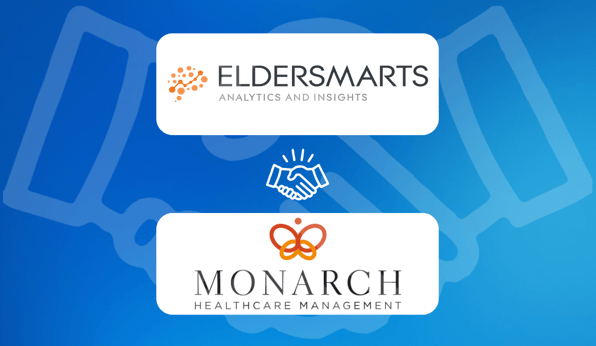Building a Culture of Safety in Your Senior Living Community

Safety is one of the primary reasons seniors and their loved ones look for senior living or assisted living communities. The peace of mind provided by living spaces designed around the needs of the aging population is worth a lot, especially to family members who are far away or are otherwise unable to take on a caregiver role.
At a senior living community, there’s an expectation of safety, and the standards are high. Below, we’ll take a look at what your senior living community can do to transcend simple policies and procedures and create a thriving culture of safety.
Understanding the Culture of Safety
Safety is a broad concept that applies to every aspect of senior living. To create a true culture of safety, you and your staff must be aware of the different types of safety and how each matters to the satisfaction and well-being of your residents.
Physical Safety
Physical safety refers to the accommodations in your senior living community that help protect residents from bodily harm. Elements of physical safety may include:
- Grab bars
- Walk-in showers
- Signage warning of trip hazards
- Emergency call systems
- Ramps and handrails
Fall prevention is a common goal when it comes to physical safety, and it should be evident to prospective residents and their loved ones when they tour your location that you’ve taken every precaution.
Emergency Preparedness
Natural disasters are unexpected, but that doesn’t mean you can’t be prepared. In most states, senior communities are required to maintain a documented emergency preparedness plan. This plan will lay out a course of action in the event of hazardous weather, a pandemic breakout, power outages, fires, and more. It should also detail a response to man-made crises, like bomb threats, terrorism, and mass casualty events.
Site Safety
One of the fundamental reasons families choose senior living communities is the peace of mind that comes with knowing a loved one is in a secure and safe community with amenities and accommodations that aren’t feasible in a private home. Elements of a safe environment may include:
- Safety measures, such as on-site guards or security cameras
- Site-wide alarm systems
- Fire safety items like fire extinguishers and sprinkler systems
Emotional Safety
This is one of the hardest types of safety to address, but it’s also one of the most critical. This includes the peace of mind felt by both residents and their loved ones in knowing your community is a place in which seniors are valued, protected, and heard. Emotional safety isn’t as easily defined as the others, but it requires a high level of training for staff members, so they can be aware of unsafe situations, and be prepared to address issues if they spot a resident in a vulnerable position.
Tips for Building a Culture of Safety
Safety should be a cornerstone of your senior living community, and that fundamental importance should be communicated to staff, residents, and families. Here’s how to work toward a culture of senior living safety in your community:
Leadership and Commitment
Creating a culture of safety starts at the top. To build a plan that truly makes your community safer, you need leadership buy-in right from the start. If your safety protocols are outdated, you may be in need of a total overhaul. Start by auditing your current safety measures, including safety equipment, and list out everything that needs to be addressed. From here, you can rank changes by priority, estimate a budget, and start planning for implementation. Remember that you have a vast amount of data all around you — survey residents for their opinions or concerns regarding safety, and use that information to guide your culture shift.
Staff Training and Engagement
Just as leadership must buy in, team members must be on board as well. This will involve training them on any software or security systems they will need to use or monitor, and educating them on all safety protocols, emergency preparedness plans, and incident reporting. Having staff support and engagement is one of the surest ways to improve resident safety.
Resident Education and Participation
Engaging your residents in their safety empowers them with an understanding of what to do if an incident occurs, and builds trust in the communtiy, staff, and leadership. Clear and transparent safety policies help avoid confusion and can keep residents calm in the face of an emergency.
Leveraging Technology and Software
A robust risk management software is one of the most important tools in your senior living safety toolbox. An app, like the one you’ll find in the Eldermark NEXT suite of senior living software products, can support your culture of safety by providing real-time data from your community so you can predict trends and get ahead of them to prevent safety incidents. It will also help you establish a reporting and response plan, so the actions your staff need to take are always clearly outlined and accurately input. Lastly, a risk management software will also increase your ability to make data-driven decisions, with actionable insights for care plans and safety measures.
Implementing and Sustaining a Culture of Safety
To put your senior living safety plan into place, you’ll need to leverage your risk management software. With an end-to-end software solution like Eldermark NEXT, you can consolidate many software platforms into one seamlessly integrated system. With Eldermark NEXT, you’ll also get our built-in risk management app, which provides the support you need to build and sustain your safety culture.
Eldermark NEXT contributes to your culture of safety in the following ways:
- It provides a system for incident reporting and monitoring
- Seamless integration with EHR and eMAR reduces errors and increases accuracy
- Engagement and activity planning helps support residents’ mental, emotional, and spiritual wellness
- Staffing resources ensure you have the right people in the right place to benefit your residents
- Simplifies reporting for regulatory compliance
- Makes the investigation process simple and efficient when incidents do occur
- Sophisticated dashboards help you identify at-risk residents and safety risks
How Eldermark NEXT Can Help Your Senior Living Community Build a Culture of Safety
Eldermark NEXT can give you the building blocks for a vibrant and thriving culture of safety in your senior living community — but it also offers much more. With Eldermark NEXT, you can take advantage of many features and functions that outperform the various softwares and platforms you already have in place. Best of all, by consolidating into one solution, you benefit from seamless integration and easy adoption for staff and residents. See how this powerful solution can change your safety game for the better, and schedule your free demo today!




